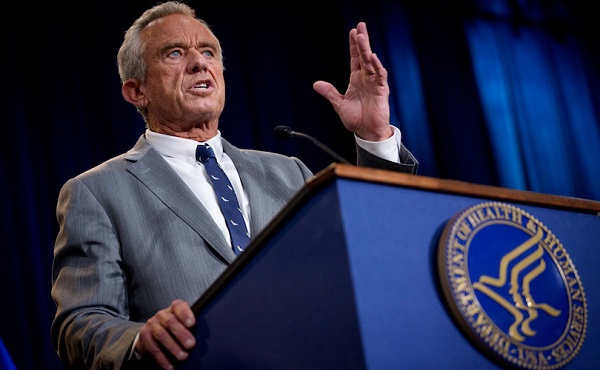Bruce Dowbiggin
If You Don’t Hear From Me, It’s Because I Don’t Hear From You.
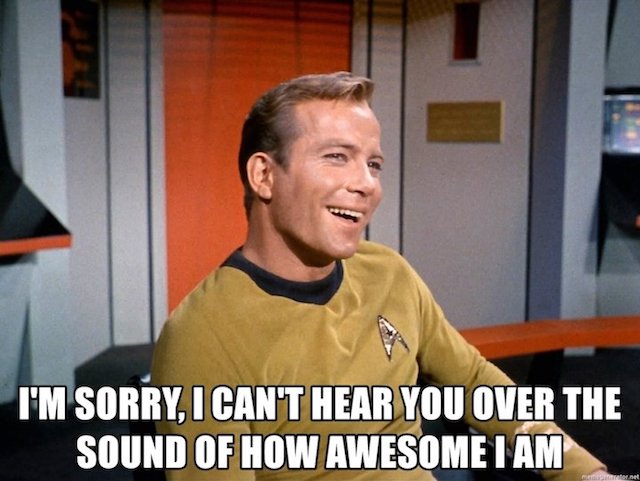
In his memoir, former BMO CEO Tony Comper recalled the press conference to announce a merger between two Japanese automobile corporations. Everything was going swimmingly until someone at the presser asked how long would it be before the two corporate cultures fully merged?
One of the CEOs replied without hesitation. “Forty-three years.”
Forty-three years? Why forty-three years? he was asked.
“Because that’s how long it will be until the executives who made this deal are all dead.”
Yes, there are stubborn business cultures. But there are also political cultures that persist against all efforts to convince them they are deluded. People find it hard to change their ways— particularly when they’ve defended them publicly for years. The New Left’s ironclad resistance to reason and debate is a feature, not a glitch. How to reach them in a friendly, inclusive manner?
Good luck. The Right’s challenge is thinking these people will respond to shame or being corrected. Can’t be done. Won’t be done. They’re like Japanese soldiers fighting WW II on a deserted island 25 years after armistice. They’ll die repeating the Donald Trump Bleach meme to themselves.

Marines help a Japanese soldier from a dugout on Tinian Island during the Fall of Tinian in World War II. He holds a cigarette the Leathernecks used to coax him out. (Photo by © CORBIS/Corbis via Getty Images)
This Gallup poll sheds light on how American (and Canadian) cultures can be blissfully unaware of some huge stories and obsessed by other narratives that fit their mindset. It shows that from 1972-2022 that GOP trust of media has plummeted from 41 percent to under 10 percent, while independents have gone from 53 percent to under 36 percent trust. IOW, their former favourite news sources don’t jive with their everyday reality.
But Democrats in the poll have vaulted from 64 percent to 76 percent in trust of media. Why? One reason probably lies with being told the narratives that please them. That give them comfort. These consumers allow legacy media’s fact checkers to sort out what they should know from “disinformation” without getting their hands dirty with the original story.
How pervasive was the scrubbing? The recent Missouri v. Biden recognized that federal government officials had been interfering with social media companies that digressed from the “accepted” line. An appeals court ordered them to stop. In another case, FBI was bribing reporters and scientists to change their opinions on the origin of the Covid-19 virus, sanitizing stories before they are doled out to the Woke.
“The Science” is supposed to be an ongoing vigorous debate with few settled laws. Yet, most cult scientists refuse debate, preferring to dismiss opponents as conspiracy nuts or— as they did with vaccines— dangers to society. When Al Gore allows himself to be cornered by questions, he rolls his eyes, sighs theatrically and asks his followers how anyone could deny The Science.
Gore’s climate apocalypse culture has morphed within a generation from the few fighting pollution to a global dogma of CO2 poisoning nature . Attempts to talk sense on carbon emission obsession, plastics prohibitions, aversion to the nuclear option, Greta Thunberg beatification have all proven futile in the face of an End Oil Now cult that makes Scientology look like the Boy Scouts.
It was the same for the #RussiaHoax, #FinePeopleHoax, #BleachHoax and now Hillary Clinton’s “real war on truth, facts, and reason”. These liberal road-tested canards persists to this day. Here’s Biden on a rare cogent day this summer repeating the #FinePeople hoax that has been debunked years before. Even the Washington Post has had enough, listing Biden’s Top 100 fabulist claims since becoming POTUS.

The latest cult cleansing is Biden’s patently false denial of any contact with son Hunter Biden’s Shakedown scheme. The denial is awarded first position beside #climateemergency on search engines and nightly newscasts. Famously, 51 former security directors and officials claimed, without evidence, that Hunter’s infamous laptop was Russian disinformation. Case closed, said MSNBC. No wonder so many consumers of legacy media in this echo chamber can blithely claim there is no substance to any of the Hunter stories documented by the competition and chronicled on his own hard drive.
The Canadian equivalent of denial culture came with the magic “cure-all” vaccines. Rather than publicly confront the Truckers Convoy on their refusal to take Covid-19 vaccines (which are now accepted as being flawed ), Trudeau hid in the Rideau Cottage calling truckers “an insult to science”. To make sure they never got a chance to question him he sent the cops after them, arrested them, suspended their civil liberties and finances and subjected them to show trials.
And he was supported by the purchased Canadian media who vilified the protesters— for lack of armed insurrection or rioting— for staying too long in their protest. Many promoted false stories of arson and foreign financing of the convoy. This media Trudeau then tried to reward with Bill C-18— designed to make Meta, Google and other large tech sources pay to prop up failing Canadian media. In response, Meta has blocked all news links in Canada and cancelled existing deals with Canadian news outlets. The blocked links cover both Canadian and foreign news in light of Bill C-18.
And the same newspaper lobby that largely gave him a free pass on declaring a national emergency now wants the $595 million “temporary” bailout to be extended with double the subsidies (seeking government tax credits equal to 35% of labour costs.) The bailout meant to aid transition to digital is now instead a Trudeau lifeline in the Toronto Star’s bankruptcy. In the meantime, writes Michael Geist, “investment in the publishing sector has ground to a halt, Canadians have lost access to news on social media, and small and independent media are particularly hard hit. Avoiding the Canadian outcome is a now a top policy priority in other countries looking at media legislation.”
All this as the federal government prepares an online hate speech law— hate to be defined by themselves.
Many are just hoping that a Liberal loss in the next election will cease the encircling madness. That sanity will prevail. But the Japanese car manufacturers are telling us not to get our hopes too high. Trudeau Nation is quite prepared to got to its grave before ever admitting its copious mistakes.
Sign up today for Not The Public Broadcaster newsletters. Hot takes/ cool slants on sports and current affairs. Have the latest columns delivered to your mail box. Tell your friends to join, too. Always provocative, always independent. https://share.hsforms.com/16edbhhC3TTKg6jAaRyP7rActsj5
Bruce Dowbiggin @dowbboy is the editor of Not The Public Broadcaster A two-time winner of the Gemini Award as Canada’s top television sports broadcaster, he’s a regular contributor to Sirius XM Canada Talks Ch. 167. Inexact Science: The Six Most Compelling Draft Years In NHL History, his new book with his son Evan, was voted the seventh-best professional hockey book of all time by bookauthority.org . His 2004 book Money Players was voted sixth best on the same list, and is available via http://brucedowbigginbooks.ca/book-personalaccount.aspx
Bruce Dowbiggin
WOKE NBA Stars Seems Natural For CDN Advertisers. Why Won’t They Bite?
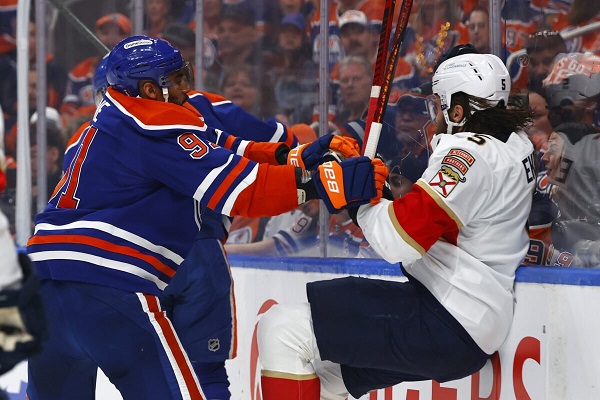
The wonderful people who brought you Elbows Up and Don’t Shop At Home Depot! are now on to Edmonton Oilers Bring Home The Cup. In response to no Canadian-based team winning the Stanley Cup since 1993 the corporate nostalgia folks are linking arms with Connor McDavid & Co in their struggle with the dastardly Florida Panthers. The Oil are now Canada’s team!
In one bit they were taking ice shavings from McDavid’s home rink in southern Ontario to mix with the frozen Zamboni water of Edmonton’s Rogers Place arena. Okay, they have eight players on the Oilers roster who aren’t Canadian (hello Leon Draisaitl), and the stars now killing it for the Panthers, Sam Bennett and Brad Marchand, are from Ontario. But never mind. Like playing Mr. Dressup trivia with Mike Meyers it’s just too good an idea to waste.
The outcome of all this patriotic wind therapy will be determined Tuesday— or Thursday at the latest. But it will have achieved the desired goal of warming the cockles of all those Canadians who turtled in the election, flipping back to Mark Carney’s Liberals when the going got a little rough with Donald Trump. Resulting in a maximum four more years of Carney’s faculty lounge of dunces and Kamala Harris clones.
While the marketers were playing the Maple Syrup March over the Stanley Cup Final they missed an even better opportunity to marry Canadian patriotism with sport. We speak, of course, of the inevitable crowning of Canadian stars as champions of the NBA. In fact the entire progress of the postseason in the sneaker league has witnessed great Canadian results.
Not least of which: Hamilton’s Shai Gilgeous Alexander winning the NBA MVP while leading his Oklahoma City Thunder to the brink of the NBA crown. For those distracted by Stu Skinner and Corey Perry, SGA is a revelation, If you missed him leading Canada back to the Olympics last year the wiry 26-year-old is a lithe, unstoppable chinook who routinely scores 30 points a game.

He has help from another Canadian, Montreal’s Lu Dort, a finalist for NBA defensive player of the year, who also led Canada to the Olympics. As unstoppable as SGA is, Dort is immovable. But that’s not all the Canadian content. In the Finals they are up against two more Canadian teammates from last year. Aurora Ont.’s Andrew Nembhard is the back-court catalyst for Tyrese Haliburton’s Indian Pacers, taking them to the Eastern title and within two wins of the NBA title. He’s assisted by another Canadian, Montreal’s Benedict Mathurin, the hero of the Game 3 win for the Pacers. They’re now household names.

The Canadian content didn’t end there, either. In the semifinals, the Thunder beat the Minnesota Timberwolves featuring SGA’s cousin Nickeil Alexander-Walker , another alumnus of the CDN national team. At one point the two close friends were anything but friendly, shoving each other under the basket.
They had Canadian company in the postseason. In earlier rounds R.J. Barrett and the New York Knicks made it to the second round in the East, Jamal Murray’s Denver Nuggets fell to the Thunder in Round Two, while the Houston Rockets and Mississauga’s Dillon Brooks, a tenacious physical presence, lost to Steph Curry’s Golden State Warriors . Meanwhile, Corey Joseph’s Orlando Magic lost in the first round to Boston.
But the Canadian content didn’t end there. The Toronto Raptors, NBA champs of 2019, are now spread throughout the league, affording nostalgic Canadian fans a rooting playoff interest in players such as Pascal Siakim, who’s pairing with Nembhard and Mathurin to push the upset-minded Pacers, shooting guard OG Anunoby teamed with small forward R.J. Barrett on the Knicks and point guard Fred Van Vliet of the Rockets. All harkened back to the Raptors’ greatest days.
But in the heat of Elbows Up marketing these great performances don’t seem to get a sniff from marketers looking to promote Canadian unity in these fractious days. While the sports networks give airtime to the stories in the Association. the general public and advertisers have little time or inclination to draw patriotic strength from these young men.
Before we completely condemn Canadian marketers it should be noted that the interest in the NBA in general is waning. The NBA has lost 75 percent of its TV audience since the Michael Jordan peak while many other sports — NFL, men’s & women’s college basketball, college football — have set record TV ratings. Yes, TV ratings in many fields have dropped since the 1990s. Still, it seems significant.
The problem for the NBA in a Time of Trump is its embrace of hard-left politics. Whether it’s LeBron James defending Chinese shoe manufacturers, the slavish devotion to #BLM even as its corruption is revealed and a maniacal obsession with Donald Trump (and embrace of Kamala Harris) the NBA has made its bed with radical political and cultural elements. It’s as if the Trump election and cultural shift never happened.
In this wilful blindness they are supported by their media partners whose own credibility is at an all-time low after carrying water for the Biden farce and Kamala’s erasure. Ironically, this is the same political crash car running Canadian politics at the moment. You’d think that would make the NBA— and its sister Women’s NBA—like catnip to the Canada Not For Sale crew.
So far the hockey quest is foremost in their minds. But perhaps when SGA holds the Larry O’Brien Trophy they might just achieve the symbiosis that the sport has always coveted.
Bruce Dowbiggin @dowbboy is the editor of Not The Public Broadcaster A two-time winner of the Gemini Award as Canada’s top television sports broadcaster, his new book Deal With It: The Trades That Stunned The NHL And Changed hockey is now available on Amazon. Inexact Science: The Six Most Compelling Draft Years In NHL History, his previous book with his son Evan, was voted the seventh-best professional hockey book of all time by bookauthority.org . His 2004 book Money Players was voted sixth best on the same list, and is available via brucedowbigginbooks.ca.
Bruce Dowbiggin
Canadians Thinks America Owes Them. Trump Has Other Ideas

Breaking: It’s now being reported that in the 2024 U.S. election, zero Canadians voted for Donald Trump. In fact, zero Canadians voted for anyone on the ballot. They’re not allowed to. And yet rage monkeys in the Canadian media seem to have the idea that Canada is— and should be— an immediate priority of POTUS 47.
Here’s Globe & Mail/ CBC wind therapist Andrew Coyne about ten exits past normal on the idea of Donald Trump on Canadian soil. Okay, on Alberta soil. “We’re going to roll out the red carpet for the wannabe dictator of America at the very moment he is moving to suppress dissent with armed force?” (You mean like the Truckers Convoy?)
Cartoonist Michael DeAdder, who likely cries if you use improper pronouns, says “Hold my kombucha”. His latest etching has Trump asking a veteran what he did in the war. The witty retort is “Fought against people like you”. Get it? Trump murders six millions Jews. But The Hill keeps this guy working, and the laughs just keep on coming. Free speech!

The presumption is jaw-dropping. Even as Trump’s approval rating hits 53 percent, Canadians online were echoing Democrats’ fever dreams of forming a shadow government to take over from Trump via coup. This sense of impunity at a distance is why the Canadian government— along with other drive-by virtue signallers UK, Norway, New Zealand, and Australia— have imposed sanctions on two sitting members of the Israeli cabinet. They know it will rile Trump’s America.
For ordinary Canadians, Trump became a post-it note to justify giving Team Liberal another swing at ruining the nation. “We used to be such friends! He’s a tyrant.!” This just in: Love him or hate him Trump is employed by Americans to do their bidding. He’s not a sentimental buddy of Canada who’ll cut us some slack for old time’s sake. He has no remittance from Canada to please the Laurentian elites. If your defence is non-existent and your military gender-obsessed: you had it coming.
Are his policies jostling Canada? Absolutely. Read Art of the Deal. The 51st state jibe when Justin soiled himself was rude. But it worked on pliant Canadian liberals. Now the The Little Banker is disavowing the dissolute decade of Trudeau while employing Conservatives’ policies on defence spending, inter-provincial trade and border security. Hell, he’s naming longtime Tories to his personal staff.

In the end Carney knows this ain’t mock Parliament. That his dossier begins and ends with satisfying the beast to the south. None of this should be a surprise. Yet Canadians dozed when Trump made clear in his election campaign that the American economy is the greatest in the world. If you want to fish in that pond it’s not going to be for free. That means tariffs for a range of U.S. industries that couldn’t compete in a Biden world.
We can argue how well tariffs work, but Trump wants them to reduce taxes on the people who elected him. Not the Canadians who fly first class but pay economy. And who have pushed his approval ratings into the 50s, higher than ever before. (Likely to spike higher after the No Kings Riot season peters out.)
No wonder Canadians preferred the guy before Trump, the senile sock puppet whose government was run by anonymous figures using the auto-pen. Sleepy Joe let Canada slide into mediocrity and financial peril without any judgement. It was comfortable. Then The Donald had the nerve to expose the ditch Canada was in.
Canada, Trump pointed out, was delinquent on its defence, harbouring Chinese drug lords, printing money like Canadian Tire and its banks were involved in money laundering. That was the nice stuff. Try Organized fentanyl networks operating with impunity in the largest cities of the nation So dumping on Trump in salty cartoons allows Canada’s Mod Squad to ignore the real issues that should have been litigated in the April election.
We have written extensively about the ruse that was played on gormless Canadians in “U.S. Voters Smelled A Rat But Canadian Voters Bought The Cheese” We have catalogued Canada’s drug and money laundering disgrace in “Chinese Gangs Dominate Canada: Why Will Voters Give Liberals Another Term?” We’ve described the real-estate bubble economy created by Trudeau and sidekick Carney that threatens to crash the economy and ruin seniors’ pensions in
In the end, it is still la-la-la-la We Can’t Hear You. Trump-obsessed Boomers more concerned with the equity in their jumped-up bungalows gave the finger to the next generations and blamed it all on Orange Man Bad. In the monotone of Canadian political comment it all seemed so easy. Turn against Trump. Cash another dividend. Cheer on MSNBC and CNN bitch sessions.
The Family Compact don’t get it. Their Antifa heroes down south plan demos and “nonviolent” activity to crater the public resolve. In Canada that still works. But in the U.S. the Covid reverb is hitting the natural governing class of the nation. While they craft fine phrases about democracy the consumers remember them using a virus to stop society.
The appetite for Gavin Newsom blovaitors and Jen Psaki fart catchers is crashing in America. Riots may be coming in the U.S., but it won’t be like George Floyd and Covid and the pussy hats. At some point Canada’s docile classes better wake up, too. America owes them nothing. They need to earn the respect.
Bruce Dowbiggin @dowbboy is the editor of Not The Public Broadcaster A two-time winner of the Gemini Award as Canada’s top television sports broadcaster, his new book Deal With It: The Trades That Stunned The NHL And Changed hockey is now available on Amazon. Inexact Science: The Six Most Compelling Draft Years In NHL History, his previous book with his son Evan, was voted the seventh-best professional hockey book of all time by bookauthority.org . His 2004 book Money Players was voted sixth best on the same list, and is available via brucedowbigginbooks.ca.
-

 Business2 days ago
Business2 days agoEU investigates major pornographic site over failure to protect children
-

 Canadian Energy Centre2 days ago
Canadian Energy Centre2 days agoCross-Canada economic benefits of the proposed Northern Gateway Pipeline project
-
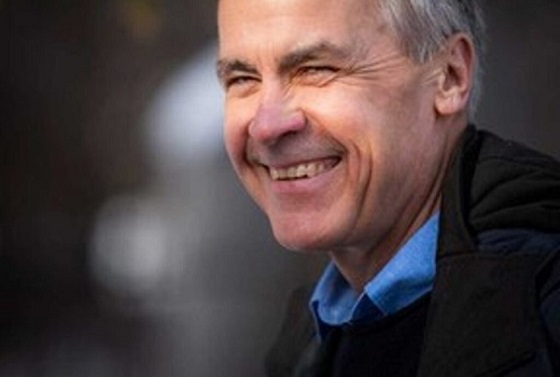
 Economy2 days ago
Economy2 days agoCarney’s Promise of Expediting Resource Projects Feels Like a Modern Version of the Wicked Stepmother from Disney’s Cinderella
-

 Alberta2 days ago
Alberta2 days agoAlbertans need clarity on prime minister’s incoherent energy policy
-

 conflict20 hours ago
conflict20 hours ago“Evacuate”: Netanyahu Warns Tehran as Israel Expands Strikes on Iran’s Military Command
-

 Health23 hours ago
Health23 hours agoLast day and last chance to win this dream home! Support the 2025 Red Deer Hospital Lottery before midnight!
-

 Energy19 hours ago
Energy19 hours agoCould the G7 Summit in Alberta be a historic moment for Canadian energy?
-
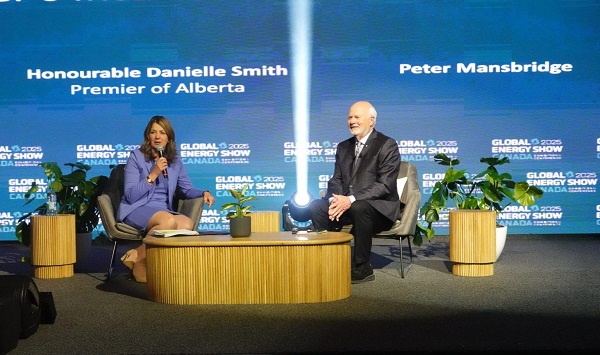
 Alberta1 day ago
Alberta1 day agoAlberta’s grand bargain with Canada includes a new pipeline to Prince Rupert






